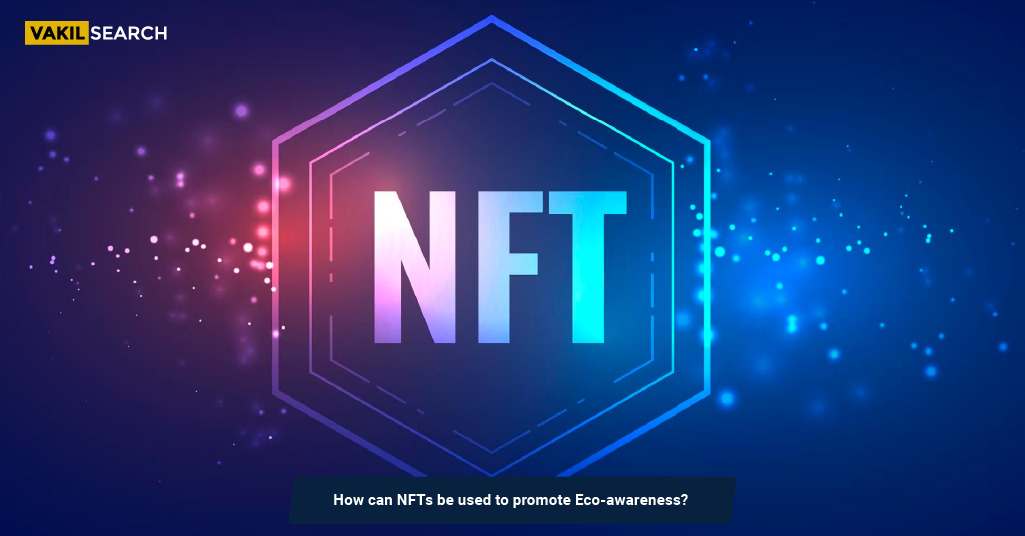Learn how these unique digital assets revolutionise ownership and trade, all while exploring their environmental impact and the pursuit of eco-friendly NFTs.
NFTs (Non-Fungible Tokens) have garnered significant attention in recent years, revolutionizing the way we perceive and value digital assets. While NFTs have primarily been associated with the art and collectables market, their potential extends far beyond the realm of digital ownership. One promising avenue is their ability to promote eco-awareness and environmental causes. In this article, we will explore how NFTs can be utilized to raise awareness about environmental issues, advocate for sustainable practices, and support green initiatives.
Introduction: NFTs and the Potential for Eco-awareness Promotion
NFTs are unique digital tokens that enable the ownership and authentication of digital assets using blockchain technology. By leveraging the transparency, security, and immutability of blockchain, NFTs have disrupted the art and collectables market, offering a new way to buy, sell, and trade digital assets. The potential of NFTs to promote eco-awareness lies in their ability to create a connection between digital ownership and real-world issues.
Environmental Impact of Traditional Art and Collectibles
Traditional art and collectables often carry a significant environmental footprint. The production of physical art requires resources like paper, canvas, paints, and chemicals, which contribute to deforestation, water pollution, and carbon emissions. Additionally, the transportation and storage of physical artworks contribute to greenhouse gas emissions and energy consumption. By transitioning to digital art through NFTs, we can reduce these negative environmental impacts.
Sustainable Advantages of NFTs
NFTs offer several sustainable advantages over physical art and collectables. Firstly, they eliminate the need for physical materials, reducing resource consumption and waste generation. Secondly, NFTs enable easy and efficient global distribution, eliminating the need for physical transportation. This significantly reduces carbon emissions associated with shipping and logistics. Lastly, NFTs provide greater accessibility, as they can be viewed and enjoyed by a global audience without the limitations of physical exhibitions. These sustainable advantages make NFTs an ideal medium for promoting eco-awareness.
Leveraging NFTs to Highlight Environmental Issues and Solutions
NFTs can be used as a powerful medium to highlight and raise awareness about pressing environmental issues. Artists and activists can create digital artworks or multimedia projects that depict environmental degradation, climate change, or the beauty of nature. By attaching informative descriptions and narratives to these NFTs, viewers can gain a deeper understanding of the environmental challenges we face and the potential solutions available. The scarcity and uniqueness of NFTs also create a sense of urgency and exclusivity, drawing attention to these critical issues.
Collaborating with Artists and Activists: NFTs for Eco-awareness Campaigns
Collaborating with artists and activists is crucial for leveraging the potential of NFTs to promote eco-awareness. By working together, they can create captivating NFT collections that align with environmental values and narratives. These collections can feature original artwork, photographs, or even audiovisual experiences that evoke emotions and inspire action. Artists and activists can use their influence to engage their existing fan base and reach new audiences, spreading the message of environmental consciousness through NFTs.
Supporting Green Initiatives: NFTs as Fundraising Tools for Environmental Causes
NFTs can also serve as powerful fundraising tools for environmental causes. Organizations working towards environmental conservation and sustainability can create NFTs that represent their mission and goals. These NFTs can be auctioned or sold, with a portion of the proceeds directed towards funding specific projects or initiatives. By tokenizing the support for environmental causes, NFTs offer a transparent and accountable way for individuals and organizations to contribute to the preservation of our planet.
NFTs Explained
Non-fungible tokens (NFTs) are at the forefront of the digital revolution, presenting a novel concept that defies traditional notions of interchangeability. These unique digital assets serve as veritable certificates of ownership for an array of digital creations, spanning art, videos, music, collectibles, and even coveted gaming items. Their distinctiveness lies in their individuality, rendering them incapable of being swapped with any other type of asset.
Empowered by blockchain networks, NFTs find their stronghold in the realm of security and immutability. Through this technology, NFTs gain a permanent place on the digital ledger, ensuring their authenticity and safeguarding them against manipulation or alteration. This digital backbone transforms NFTs into the ultimate digital provenance, uncontestable in their ownership lineage.
The advent of NFTs has unveiled remarkable possibilities. They breathe life into entirely new digital markets, revolutionising how artists and creators monetise their work. These tokens provide an innovative and efficient channel for connecting creators with enthusiasts and collectors, eliminating intermediaries and ushering in a direct avenue for exchange.
In the dynamic world of cryptocurrency, NFTs are rapidly emerging as a captivating trend. Investors are recognising their potential to diversify portfolios and tap into the burgeoning digital asset landscape. This movement is fueled by their unique ability to provide ownership and enable trade of digital creations in an unprecedented manner.
As NFTs continue to garner attention and popularity, prudent research and understanding become paramount for those intrigued by this cutting-edge trend. Amidst the allure lies the need to comprehend the associated risks and nuances. With their rising prominence, NFTs stand poised to reshape digital ownership and trade, redefining the boundaries of value and creativity.
How Are NFTs Impacting the Environment?
The emergence of Non-Fungible Tokens (NFTs) has brought about a remarkable transformation in the digital asset landscape, yet their impact extends beyond the virtual realm, delving into the environmental sphere. As we delve into the world of creating, selling, or acquiring NFTs, the underpinning blockchain networks come to the forefront, demanding energy to authenticate and incorporate transactions into their blocks. However, the surge in digital asset trading has propelled the energy consumption of these networks, raising concerns about the environmental repercussions attributed to NFTs.
The degree of energy expended by NFTs hinges on the consensus mechanism employed within their blockchain network. Presently, the predominant Proof-of-Work (PoW) consensus mechanism prevails, involving miners unravelling intricate mathematical puzzles to validate transactions and integrate blocks. The ascent in NFT creation, trading, and acquisition escalates the energy demand, as miners intensify their efforts to satisfy the heightened digital activity.
Amplifying this energy quandary, numerous NFTs find their abode on Ethereum-based networks, which necessitate gas fees for transaction execution. This compounds the environmental implications, as the PoW consensus method is employed in Ether mining, intensifying energy consumption in tandem with the rise of NFT engagement.
Crucially, NFTs are not sole culprits in this energy conundrum; any transaction within a PoW-based blockchain contributes to the network’s energy utilisation. Consequently, a clarion call emerges for the adoption of energy-efficient consensus mechanisms to mitigate the environmental ramifications. The pathway to a greener blockchain landscape lies in the embrace of energy-efficient methodologies, a transformation that NFTs can catalyse when harnessed within the folds of these eco-conscious approaches.
How Are NFTs Impacting the Environment?
The emergence of Non-Fungible Tokens (NFTs) has brought about a remarkable transformation in the digital asset landscape, yet their impact extends beyond the virtual realm, delving into the environmental sphere. As we delve into the world of creating, selling, or acquiring NFTs, the underpinning blockchain networks come to the forefront, demanding energy to authenticate and incorporate transactions into their blocks. However, the surge in digital asset trading has propelled the energy consumption of these networks, raising concerns about the environmental repercussions attributed to NFTs.
The degree of energy expended by NFTs hinges on the consensus mechanism employed within their blockchain network. Presently, the predominant Proof-of-Work (PoW) consensus mechanism prevails, involving miners unravelling intricate mathematical puzzles to validate transactions and integrate blocks. The ascent in NFT creation, trading, and acquisition escalates the energy demand, as miners intensify their efforts to satisfy the heightened digital activity.
Amplifying this energy quandary, numerous NFTs find their abode on Ethereum-based networks, which necessitate gas fees for transaction execution. This compounds the environmental implications, as the PoW consensus method is employed in Ether mining, intensifying energy consumption in tandem with the rise of NFT engagement.
Crucially, NFTs are not sole culprits in this energy conundrum; any transaction within a PoW-based blockchain contributes to the network’s energy utilisation. Consequently, a clarion call emerges for the adoption of energy-efficient consensus mechanisms to mitigate the environmental ramifications. The pathway to a greener blockchain landscape lies in the embrace of energy-efficient methodologies, a transformation that NFTs can catalyse when harnessed within the folds of these eco-conscious approaches.
Can You Buy Energy-Efficient NFTs?
The answer is a resounding yes. As the NFT universe expands, astute choices can lead to the acquisition of digital treasures that are not only collectible but also eco-conscious.
NFTs, renowned for their uniqueness and ownership verification through blockchain networks, inherently entail energy consumption for tasks like minting and transaction validation. However, the crux lies in selecting the right avenues to indulge your NFT quest. Within the intricate tapestry of NFT ecosystems, a realm exists where energy-efficiency and digital artistry harmonise seamlessly.
By strategically navigating the landscape of NFTs, one can encounter digital assets that embrace a sustainable footprint. The key lies in the blockchain networks hosting these NFTs. The choice of blockchain platform profoundly influences the energy consumption associated with NFT activities. Opting for platforms fortified with innovative consensus mechanisms, such as Liquid Proof-of-Stake (LPoS) and Proof-of-History (PoH), propels you towards energy-efficient NFTs.
These advanced consensus methods shatter conventional paradigms by streamlining processes, drastically reducing energy demands, and fostering a more sustainable digital ecosystem. The act of collecting NFTs transitions from mere acquisition to a conscious choice that resonates with environmentally aware aspirations.
Conclusion
NFTs have the potential to revolutionize the way we promote eco-awareness and engage with environmental issues. By leveraging the sustainable advantages of NFTs and collaborating with artists and activists, we can create impactful campaigns that educate and inspire action. Furthermore, NFTs provide a unique fundraising opportunity for environmental causes, allowing individuals to support green initiatives directly. As the world increasingly embraces digital ownership and sustainability, the use of NFTs for eco-awareness is a powerful tool to drive positive change and create a more environmentally conscious society.
For more legal information, visit Vakilsearch.
FAQs
How can an NFT be eco friendly?
However, the path to significantly enhancing the eco-friendliness of NFTs lies in adopting alternative blockchains or awaiting Ethereum's upgrade completion.
Are non fungible tokens eco friendly?
The environmental impact of non-fungible tokens (NFTs) varies based on their production methods.
How do NFTs create carbon emissions?
Creating an NFT involves energy consumption as each transaction necessitates crypto mining, a process performed by interconnected specialised computers and devices. Unfortunately, this procedure emits CO2, thus impacting the environment.
What is the carbon footprint of NFT?
This implies that throughout its existence, an average NFT will amass a carbon footprint of 211kg of CO2, akin to driving 513 miles in a typical US gasoline-fueled car.
Also, Read:










